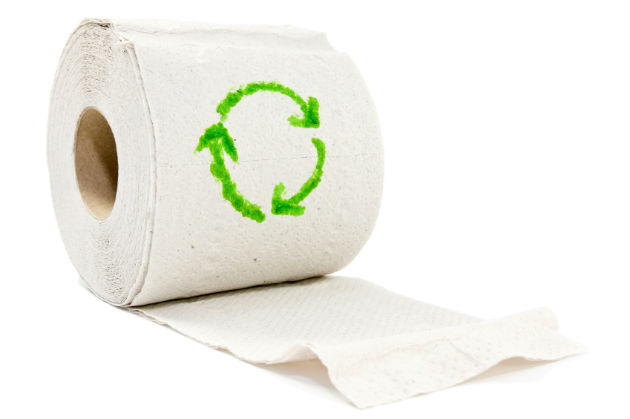We all need it, and we all buy it. But, according to the EPA, we could save 470,000 trees, 1.2 million feet of cubic landfill space and 169 million gallons of water if everyone in the U.S. bought just one roll of recycled toilet paper instead of regular toilet paper.
Keeping that in mind, when looking for toilet paper that is better for the environment, there are two things to consider: post-consumer recycled content and chlorine usage.

Post-consumer recycled content
Check for the highest percentage of post-consumer recycled content that you can find. Post-consumer waste is made from the paper products you put in your recycling bin and is preferable to pre-consumer waste, which is often from the manufacturing processes. Use of post-consumer waste supports community recycling programs.
Chlorine usage
Check to see how the product has been whitened, being careful to avoid products whitened with chlorine bleach. The
Toilet Paper Encyclopedia explains, “Many pulp and paper mills use chlorine-based chemicals to bleach pulp white. These chemicals react with organic molecules in the wood and other fibers to create many toxic byproducts, including
dioxin. Chlorinated toilet paper contains the highest amount of furans out of all cosmetic tissues. When we buy toilet paper bleached with chlorine, we support pulp and paper mills that pollute our environment with dioxin and other toxic organochlorines.
“Dioxin, a bleaching byproduct, is one of the most toxic human-made chemicals. Once released into the environment, it is persistent because natural bacteria cannot effectively break it down. ‘Dioxin’ is often used as a catchall term for three acutely toxic chemical groups: true dioxins, furans and
polychlorinated biphenyls (PCBs).”
Look for Processed Chlorine Free, which indicates a product is made with recycled fibers and no chlorine compounds have been used in the recycling process.
For more information, the
Natural Resources Defense Council has a useful Toilet Paper Guide that charts toilet paper brands and lists the recycled content percentage, the post-consumer waste percentage and the bleaching process of each. It also lists brands to avoid.
